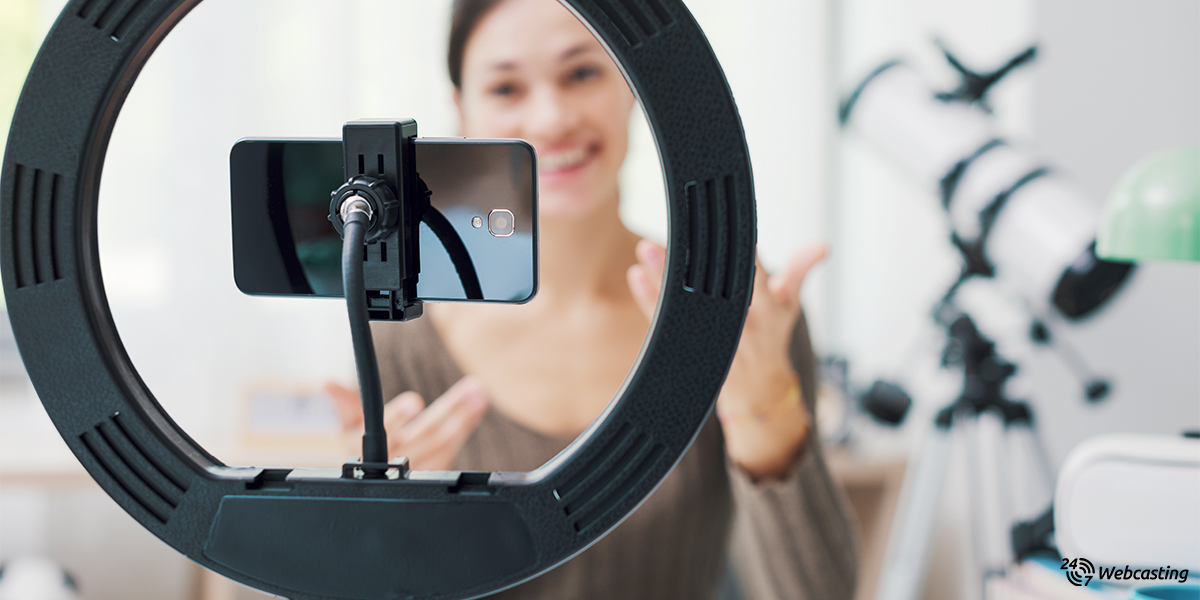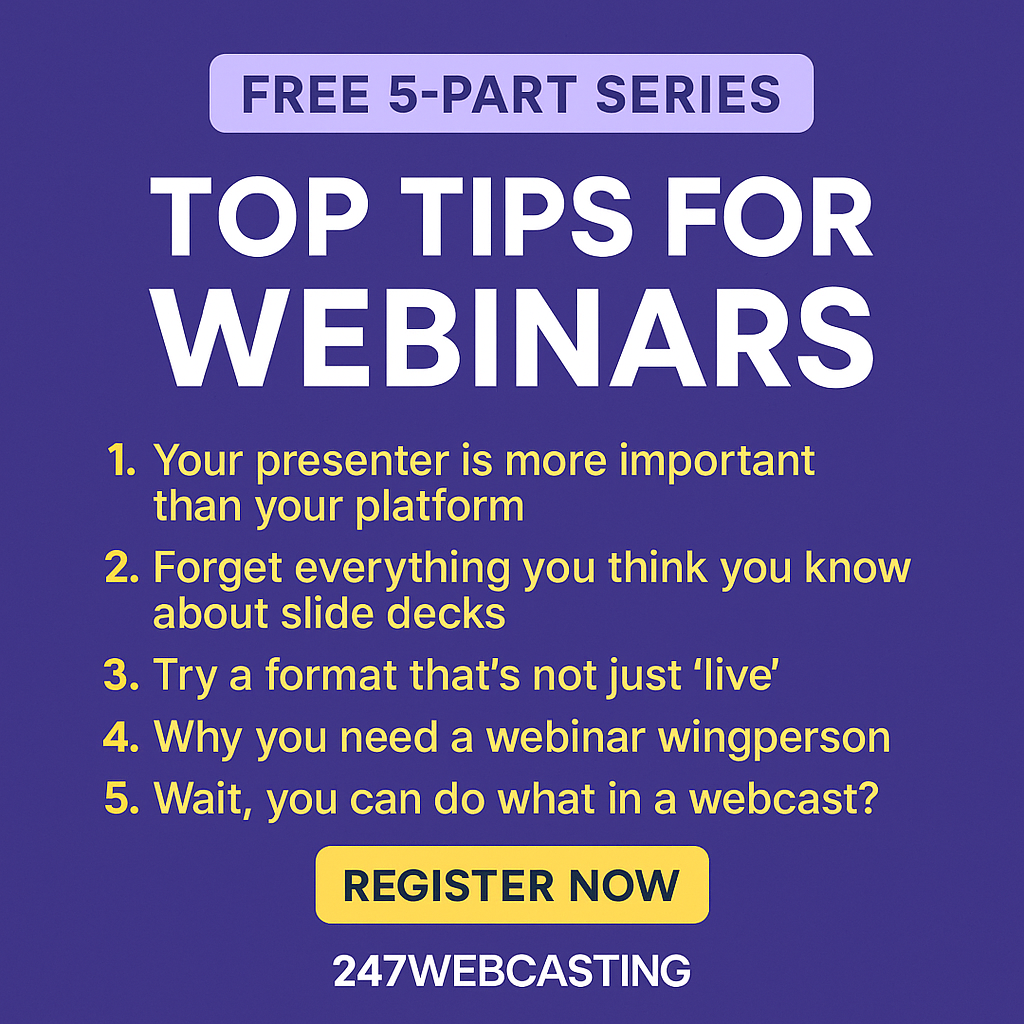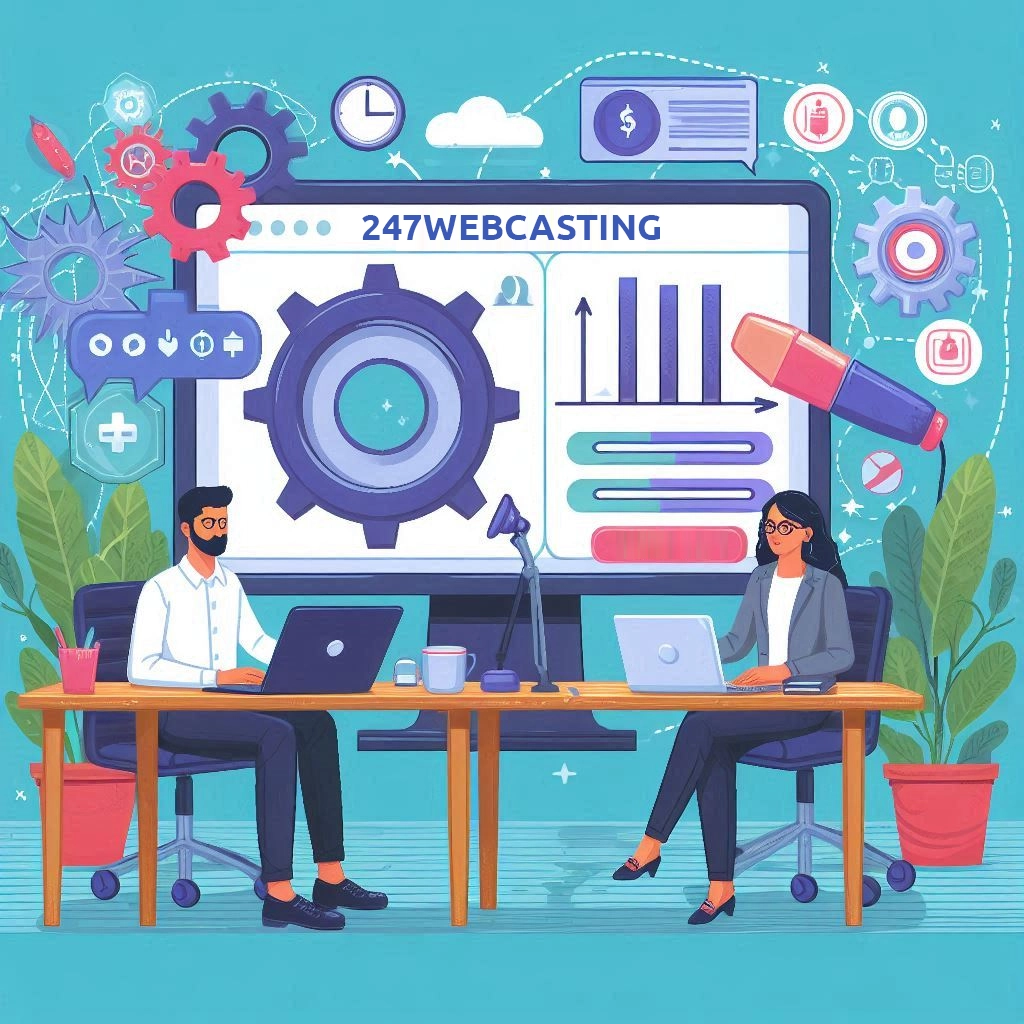
The beginning of any successful event is preparation. Getting ready before the big day is essential in guaranteeing a smooth functioning event. Being adequately equipped and ready for the event is critical to its success.
1. Deciding on the subject matter for a webinar should be your beginning. You must have an intention in hosting the talk, and that will aid you to design it to accomplish your goals. Contemplate the most urgent matters in your field to be seen as a leader of ideas. This will help you locate a topic that can really benefit your attendees.
It is necessary to investigate what difficulties your target audience deals with in their profession. Ask yourself this question and consider the answers.
Research the industry press and social media platforms to determine trending topics that your target audience seeks solutions for. Turn one of those topics into the focus of your webinar. When deciding on the subject matter, think about what would be most useful to your audience in order to improve productivity and make their working life easier. This should guide you to the right topic.
2. The title of your event is vital; it should grab the attention of your intended spectators and let them know why they should come. Make it memorable and inviting to get them to register immediately. Employ terminology that relates to the subject you picked out, being descriptive so people comprehend what to expect and discover what gains they will have by attending – like problem-solving capabilities or helping them reach a goal. Keep it concise too, as lengthy titles can be confusing and unappealing.
This is a selection of powerful and captivating webinar titles that speak directly to their target demographic:
- Have you ever considered using engagement data to enhance your B2B video marketing?
- Here are some tricks that can help you gain more while doing less.
- Six approaches for making real progress toward gender equity can be identified.
These titles all clearly demonstrate the benefit that attendees will receive.
3. Who is going to be in charge of delivering the presentation?
Your presenter(s) should be well-versed in the topic of discussion, with a strong presence and authority to guide the conversation, emphasise major discoveries, and foster an atmosphere of connectivity between the attendees and your knowledgeable speakers.
Choose someone for your event who is experienced in the subject matter and can be the anchor for the webinar, allowing speakers to make their points. The presenter should ask relevant questions that will encourage a lively debate.
Grasp the Skill of Advertising: Mastering a blend of customary and modern approaches, from social media to e-mail campaigns and joining forces with influencers, will help you to successfully advertise your webinar.
Utilise data and analytics to gauge the success of your webinars, refine your approach, and boost future performance.
4. Select your dream team! Compose an all-star panel of experts that can provide invaluable insight into your project.
The temptation could be to try to book the industry leaders for your topic, but that may not always be the correct choice. You need someone who can deliver the most value to your audience. This means more than just having a lot of knowledge; it implies they also have to be able to connect with people and make their message memorable. Take into account how credible the speaker is; if they are considered a reliable source, it will attract more people to attend the webinar and foster more trust in your company.
The next step to take is to implement the plan. We need to make sure that we put our plan into action in order to see results.
To discover industry leaders for your webinar, you can begin by exploring blogs related to the topic of your event. Look into who is discussing the matter and analyse their standing in the field. To understand who is being quoted or writing columns, sift through industry press. Additionally, ChatGPT may be beneficial in providing suitable potential speakers by typing in your industry and the angle you plan to take. Be sure to do your research on any nominees before moving forward with an invitation; though this AI-based tool will guide you in the right direction, it isn’t infallible.
5. Start off by developing an outline. Pen down your thoughts and ideas on paper, this will serve as a framework for when you begin writing. Establish what key points you would like to get across and the structure in which they should be presented in order to logically flow. This will make sure that your piece of work is both coherent and concise.
Once you’ve locked in your speakers and their topics, formulate an agenda for the webinar. It should be arranged logically so as not to confuse your audience. Introducing the topic at the outset is a great way to make sure everyone is on the same page – plus, it’s a good idea to list out any potential pain points and how they’ll be addressed during the presentation. Consider allotting each speaker a certain amount of time and don’t forget to provide room for follow-up Q&A from participants.
Outlining a webinar requires you to take your audience on a journey that acknowledges their distress points. Afterwards, provide the solutions they are looking for.
A successful webinar outline can include: beginning with an introduction, followed by a presentation of the content, and ending with a summary and call to action. To ensure that your audience will learn something new, begin the webinar with an introduction, introduce the key topics to be covered in the presentation section, then conclude by summarising what was discussed and providing a call to action.
6. Compose your dialogue! Draft what you’ll say and practice it so you have a good feel for it before the day of the performance. Put together your lines and get ready to dazzle the audience with your performance!
Once you receive the go-ahead for your plan, it’s time to pen the script. Don’t forget to take into consideration any input from the presenter; this is key in creating material that will captivate people until the very end.
Ensure you provide your webinar attendees with an exciting glimpse of what’s ahead. Offer convincing incentives to keep them online. Instead of simply informing them that “[Speaker X] will be here in ten minutes,” explain why they need to listen to this individual – for example, “[Speaker X] will be sharing five strategies to [tackle issue].”
The introduction and conclusion of your webinar can make or break it. Pay special attention to these sections – they can either create a great first and last impression for your audience, or let you down.
7. Creating an unforgettable presentation is within reach if you take the time to plan and prepare. Begin with selecting a specific topic that you are passionate about, then make sure that any content you present is accurate and reliable. Make sure your slides are visually appealing, which will help keep your audience’s attention, as well as incorporating humour where appropriate for additional impact. Finally, do not forget to practice speaking in front of a mirror before delivering to an audience. Doing these things can help ensure that your presentation leaves a lasting impression.
Your presentation should have slides that back-up the discussion of the speaker, without distracting from them. Overfilling slides with too much writing draws the audience’s attention away from what is being said, causing them to focus on reading rather than listening.
To make their argument clearer, speakers should use visuals such as slides. These can serve as a reference to help listeners understand what is being said. Bearing in mind the organisation’s brand image, keep the design of the slides simple.
Once you have had a conversation with your presenters, either they can make their own slideshow or give you the assets which will enable you to create the presentation yourself.
8. When it comes to publicising your webinar, there are numerous options available for you. From popular social media networks like Facebook and Twitter to websites where you can post information about it, your webinar promotion efforts have a good chance of success if carried out in the right way. You could also use email newsletters and other marketing channels to inform potential attendees about the event and its various features.
Once sign-up is complete, send a confirmation email and give the option to add it to their calendar. Subsequently, send reminder emails at two weeks, one week, one day and on the day of the webinar. Remind people why they signed up and what you have to offer. As soon as your landing page is created, begin promoting with social posts; intensify these postings as the event draws nearer. Mix up your messages – some could be sales pitches while others may focus on speakers’ profiles, memes addressing the pain points and other content. Additionally, incorporate information about the event into regular emails sent out a month in advance; after that solely use event-specific emails during the last two weeks prior to maximise urgency without inundating customers.
Start your paid ads early – a month before the event – on sources such as Google and Facebook, as it may take a while for them to begin producing results.
9. After your event, it’s a good idea to reach out to your guests. It’s always beneficial to maintain contact with individuals who attended your event. Keeping in touch ensures that they remember you and the experience you provided them. Reaching out after an event allows you to solidify relationships with attendees, which may be beneficial in the future.
Send an email to the attendees who agreed to receive correspondence and ask for their feedback on the event.
Enquire if the event met their expectations, if they gained something from it and if it was beneficial. Find out what they favored and what could be improved. Additionally, have them propose potential topics and speakers to consider in the future. Repetitive ideas indicate a requirement for them.
10. Gathering audience feedback is important, yet equally essential are analytics provided by your webinar platform that allow you to analyse listening and engagement during the session. This way, you can observe where any loss of interest happened, what kept them absorbed and what areas could be improved upon.
11. By examining this information, you can plan for what alterations should be done to your webinars later and how you can reignite communication that keeps your audience involved in the discussion.
12. When the live webinar is over, don’t think all is lost. Get more mileage out of the event by taking advantage of repurposing your content afterwards.
The most effective way to turn your webinar into a useful asset is to allow access to it on-demand on your website. You can also share clips and quotes from the session as visuals in social media, linking back to the full video each time. Get more mileage out of this event by transcribing it and creating blog posts related to it – AI programs like Descript or Otter AI can help you expedite this process. To find out more about using AI in webinars, check our guide listing ten essential tools.



